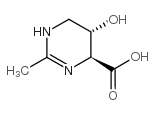Evaluation of 3-hydroxybutyrate as an enzyme-protective agent against heating and oxidative damage and its potential role in stress response of poly(3-hydroxybutyrate) accumulating cells.
Stanislav Obruca, Petr Sedlacek, Filip Mravec, Ota Samek, Ivana Marova
Index: Appl. Microbiol. Biotechnol. 100 , 1365-76, (2016)
Full Text: HTML
Abstract
Poly(3-hydroxybutyrate) (PHB) is a common carbon- and energy-storage compound simultaneously produced and degraded into its monomer 3-hydroxybutyrate (3HB) by numerous bacteria and Archae in a metabolic pathway called the PHB cycle. We investigated 3HB as a chemical chaperone capable of protecting model enzymes, namely lipase and lysozyme, from adverse effects of high temperature and oxidation. Heat-mediated denaturation of lipase in the presence or absence of 3HB was monitored by dynamic light scattering (DLS) revealing a significant protective effect of 3HB which increased as its concentration rose. Furthermore, when compared at the same molar concentration, 3HB showed a greater protective effect than the well-known chemical chaperones trehalose and hydroxyectoine. The higher protective effect of 3HB was also confirmed when employing differential scanning calorimetry (DSC) and lysozyme as a model enzyme. Furthermore, 3HB was capable of protecting lipase not only against thermal-mediated denaturation but also against oxidative damage by Cu(2+) and H2O2; its protection was higher than that of trehalose and comparable to that of hydroxyectoine. Taking into account that the PHB-producing strain Cupriavidus necator H16 reveals a 16.5-fold higher intracellular concentration than the PHB non-producing mutant C. necator PHB(-4), it might be expected that the functional PHB cycle might be responsible for maintaining a higher intracellular level of 3HB which, aside from other positive aspects of functional PHB metabolism, enhances stress resistance of bacterial strains capable of simultaneous PHB synthesis and mobilization. In addition, 3HB can be used in various applications and formulations as an efficient enzyme-stabilizing and enzyme-protecting additive.
Related Compounds
| Structure | Name/CAS No. | Molecular Formula | Articles |
|---|---|---|---|
 |
HYDROXYECTOINE
CAS:165542-15-4 |
C6H10N2O3 |
|
Metabolites associated with adaptation of microorganisms to ...
2013-01-01 [MBio 4 , e00484-12, (2013)] |
|
Synthesis of 5-hydroxyectoine from ectoine: crystal structur...
2010-01-01 [PLoS ONE 5 , e10647, (2010)] |
|
K. Lippert, E.A. Galinski
[Appl. Microbiol. Biotechnol. 37 , 61, (1992)] |
|
T. Sauer et al.
[GIT Labor-Fachzeit. 39 , 892, 894, (1995)] |
|
M.D. Vangala et al.
[Bioforum 23 , 760, (2000)] |